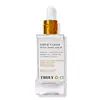What's inside
What's inside
 Key Ingredients
Key Ingredients

 Benefits
Benefits

 Concerns
Concerns

 Ingredients Side-by-side
Ingredients Side-by-side

Water
Skin ConditioningIsopropyl Isostearate
EmollientGlycerin
HumectantSimmondsia Chinensis Seed Oil
EmollientGlycolic Acid
BufferingLactic Acid
BufferingSodium Hydroxide
BufferingMandelic Acid
AntimicrobialFructose
HumectantPentaerythrityl Tetra-Di-T-Butyl Hydroxyhydrocinnamate
AntioxidantSalicylic Acid
MaskingChlorphenesin
AntimicrobialCaprylyl Glycol
EmollientSodium Hyaluronate
HumectantWithania Somnifera Root Extract
Skin ConditioningVaccinium Macrocarpon Fruit Extract
AstringentTrisodium Ethylenediamine Disuccinate
Pentylene Glycol
Skin ConditioningPotassium Sorbate
PreservativeHaematococcus Pluvialis Extract
AntioxidantCaprylic/Capric Triglyceride
MaskingCitric Acid
BufferingGlyceryl Caprylate
EmollientTocopherol
AntioxidantWater, Isopropyl Isostearate, Glycerin, Simmondsia Chinensis Seed Oil, Glycolic Acid, Lactic Acid, Sodium Hydroxide, Mandelic Acid, Fructose, Pentaerythrityl Tetra-Di-T-Butyl Hydroxyhydrocinnamate, Salicylic Acid, Chlorphenesin, Caprylyl Glycol, Sodium Hyaluronate, Withania Somnifera Root Extract, Vaccinium Macrocarpon Fruit Extract, Trisodium Ethylenediamine Disuccinate, Pentylene Glycol, Potassium Sorbate, Haematococcus Pluvialis Extract, Caprylic/Capric Triglyceride, Citric Acid, Glyceryl Caprylate, Tocopherol
Ingredients Explained
These ingredients are found in both products.
Ingredients higher up in an ingredient list are typically present in a larger amount.
This ingredient is an emollient, solvent, and texture enhancer. It is considered a skin-softener by helping the skin prevent moisture loss.
It helps thicken a product's formula and makes it easier to spread by dissolving clumping compounds.
Caprylic Triglyceride is made by combining glycerin with coconut oil, forming a clear liquid.
While there is an assumption Caprylic Triglyceride can clog pores due to it being derived from coconut oil, there is no research supporting this.
Learn more about Caprylic/Capric TriglycerideGlycerin is already naturally found in your skin. It helps moisturize and protect your skin.
A study from 2016 found glycerin to be more effective as a humectant than AHAs and hyaluronic acid.
As a humectant, it helps the skin stay hydrated by pulling moisture to your skin. The low molecular weight of glycerin allows it to pull moisture into the deeper layers of your skin.
Hydrated skin improves your skin barrier; Your skin barrier helps protect against irritants and bacteria.
Glycerin has also been found to have antimicrobial and antiviral properties. Due to these properties, glycerin is often used in wound and burn treatments.
In cosmetics, glycerin is usually derived from plants such as soybean or palm. However, it can also be sourced from animals, such as tallow or animal fat.
This ingredient is organic, colorless, odorless, and non-toxic.
Glycerin is the name for this ingredient in American English. British English uses Glycerol/Glycerine.
Learn more about GlycerinTocopherol (also known as Vitamin E) is a common antioxidant used to help protect the skin from free-radicals and strengthen the skin barrier. It's also fat soluble - this means our skin is great at absorbing it.
Vitamin E also helps keep your natural skin lipids healthy. Your lipid skin barrier naturally consists of lipids, ceramides, and fatty acids. Vitamin E offers extra protection for your skin’s lipid barrier, keeping your skin healthy and nourished.
Another benefit is a bit of UV protection. Vitamin E helps reduce the damage caused by UVB rays. (It should not replace your sunscreen). Combining it with Vitamin C can decrease sunburned cells and hyperpigmentation after UV exposure.
You might have noticed Vitamin E + C often paired together. This is because it is great at stabilizing Vitamin C. Using the two together helps increase the effectiveness of both ingredients.
There are often claims that Vitamin E can reduce/prevent scarring, but these claims haven't been confirmed by scientific research.
Learn more about Tocopherol